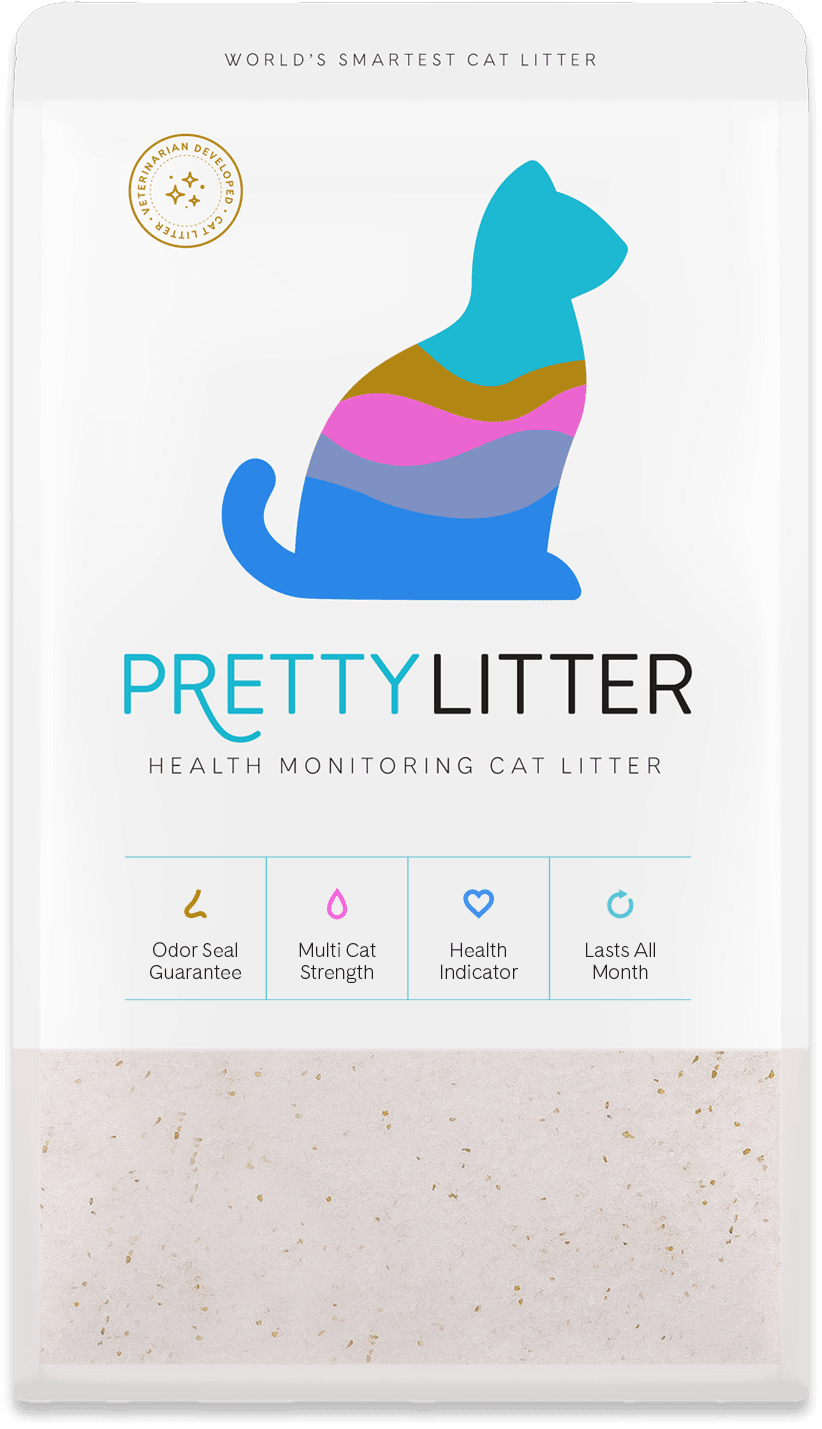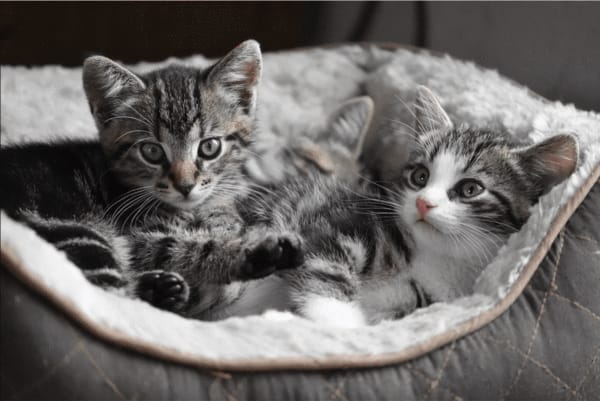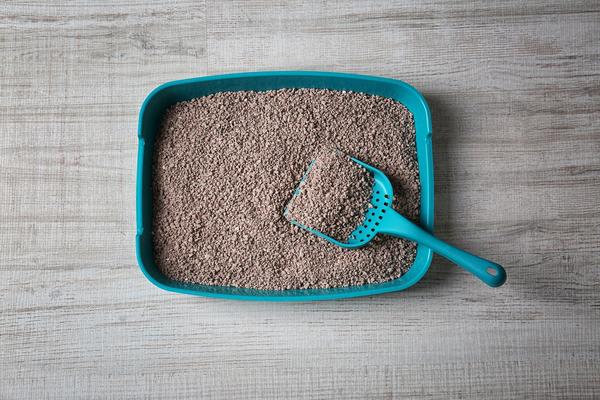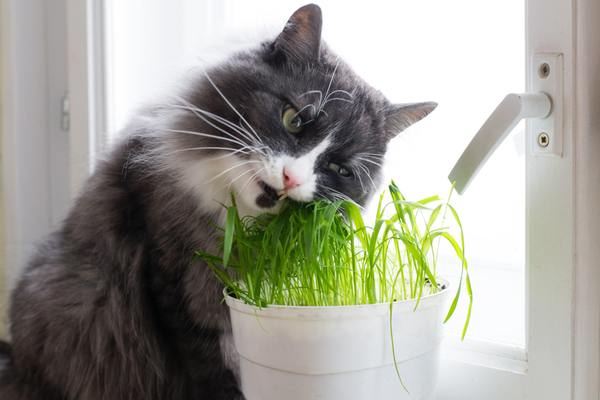April 9, 2025 |5 min read
Amorphous vs. Crystalline Silica in Cat Litter: What’s the Difference?

Written by

If you’ve ever browsed cat litter labels and come across the termsamorphous silica or crystalline silica, you’re not alone in wondering what exactly those words mean—or why they matter. While both are forms of silica solids, the difference between them can have a real impact on your cat’s comfort and peace of mind.
Let’s examine the science behind amorphous silica vs. crystalline silica, what they mean for your home, and why choosing the right one matters for your litter box routine.
The Difference Between Amorphous Silica and Crystalline Silica
Silica is a common mineral found in nature—it's actually the primary component of sand and quartz. Scientifically, it’s called silicon dioxide, and depending on how its molecules are arranged, it forms two main types: amorphous silica and crystalline silica.1
So what’s the actual difference?
It all comes down to structure. Crystalline silica has a lattice-like structure. In contrast, amorphous silica has a loose, random atomic arrangement—there’s no repeating pattern, making it non-crystalline. This disordered structure gives amorphous silica properties that are significantly different from crystalline.
Cat Litter That Prioritizes Their
Health & Your Happiness.
to get your first bag for only $14.99
Health and Safety Concerns: Crystalline vs. Amorphous Silica
When it comes to household safety—especially for products used around pets—knowing the distinction between crystalline silica vs. amorphous silica is more than a technical detail. It’s about protecting your cat’s long-term health, as well as your own. Here's a breakdown of what you need to know:
Crystalline Silica: A Known Respiratory Risk
What makes crystalline silica so concerning is its rigid, lattice-like structure that can break into sharp respirable pieces (“dust”), potentially causing scar tissue buildup in the respiratory system. While normal levels of silica in the environment aren’t linked to health effects, high exposure, such as that experienced by workers, is linked to silicosis and COPD.2
Amorphous Silica: A Safer Alternative
Here’s where the difference becomes clear: Amorphous silica has a non-crystalline structure, meaning its atoms are arranged loosely without forming sharp crystals. This gives it a softer, less abrasive quality that’s widely regarded as safe for household use.
Unlike crystalline forms, amorphous silica is generally considered safer for household use and is not classified as a known human carcinogen, unlike respirable crystalline silica. It’s not known to cause silicosis or lung disease. This is why many amorphous crystalline silica materials are used in, cosmetics, and everyday products.
Crystalline vs. Amorphous: Why It Matters in Cat Litter
So, is silica safe for cats? When it comes to choosing between amorphous silica vs. crystalline silica, it’s about your peace of mind.
Silica in Cat Litter: What You Need to Know
What does all this mean for your cat’s litter box? Quite a lot, especially when it comes to the type of silica it contains.
Silica is commonly used in cat litter because of its powerful moisture-absorbing properties. These silica particles do a lot of heavy lifting: They trap urine, help reduce odor, and keep the litter box environment drier for longer. Some silica-based litters are even designed to last for weeks without needing to be scooped daily—pretty convenient, right?
But here’s the thing—not all silica is created equal.
Some litters may contain crystalline silica, which can raise red flags when it comes to dust, inhalation, and overall safety. This matters even more if your cat loves to dig, sniff, and sprawl out in the litter box. And let’s be honest, most cats do. That’s why it’s essential to understand what kind of silica your litter contains.
Why PrettyLitter Uses Amorphous Silica
PrettyLitter was created to help cat parents proactively monitor their cat’s health. That’s why we carefully chose amorphous silica as the foundation of our formula.
This type of silica is non-crystalline, meaning its atoms aren’t organized in rigid crystal patterns.
While PrettyLitter is pet-safe, only licensed medical professionals can determine what's best for you, your household, and your cat. If you have questions or concerns about the health or wellness of your cat, please consult your veterinarian.

Ready to Switch to Safer, Smarter Litter?
Choosing the right litter plays a key role in your cat’s comfort and long-term health. Our formula is designed with advanced odor control and health-monitoring features, offering a safe, functional solution you can trust.
Whether you're already keeping an eye out for changes, or you're just looking to make litter box life simpler, it’s a great time to get started with PrettyLitter today.
Sources:
- Science Direct. Silicon Dioxide. https://www.sciencedirect.com/topics/pharmacology-toxicology-and-pharmaceutical-science/silicon-dioxide
- Occupational Safety and Health Administration. Silica, Crystalline. https://www.osha.gov/silica-crystalline
- CDC. Silica and Work Health. https://www.cdc.gov/niosh/silica/about/?CDC_AAref_Val=https://www.cdc.gov/niosh/topics/silica/
- Mo-Sci. Glass 101: Fused Silica vs. Quartz. https://mo-sci.com/glass-101-fused-silica-vs-quartz/







